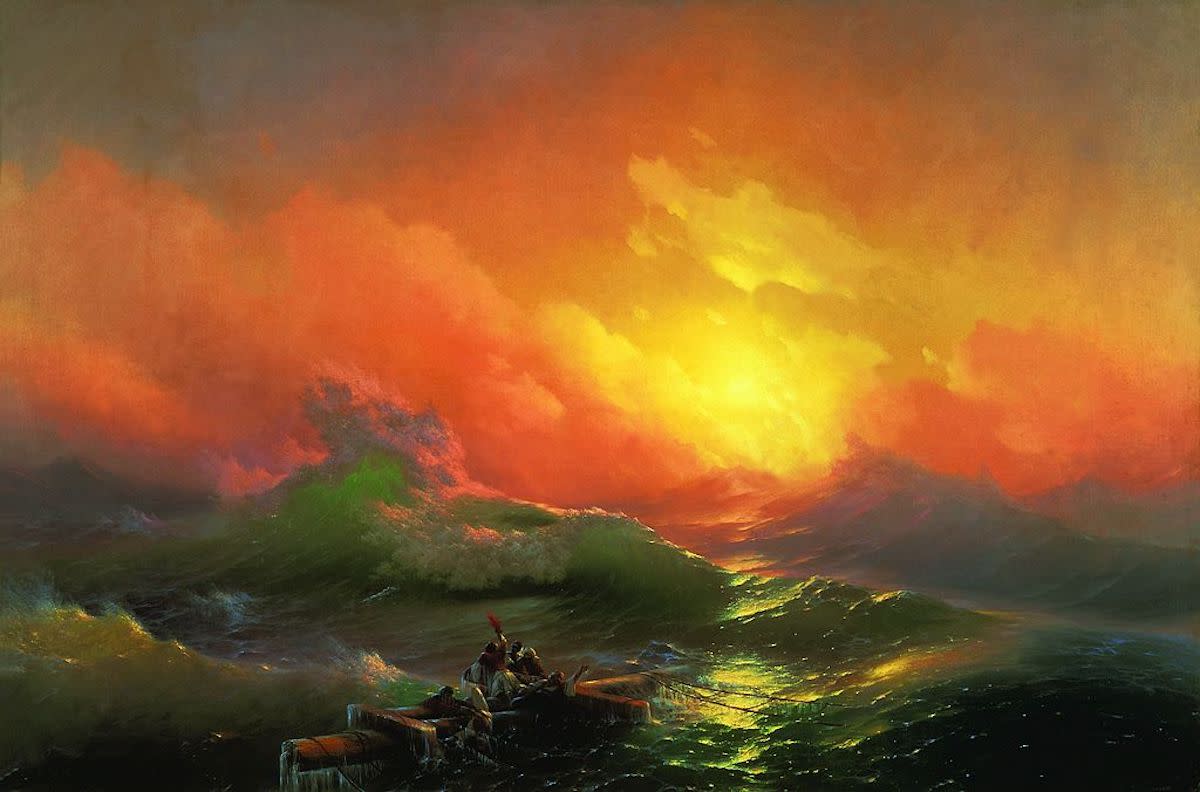Ivan Aivazovsky: A Guide to Aivazovsky’s Life and Artwork
Written by MasterClass
Last updated: Jul 22, 2021 • 4 min read
As a master of seascapes and marine art, Ivan Aivazovsky is considered among the foremost painters of the Russian Romantic movement. Learn more about Aivazovsky’s life, famous artworks, and artistic style.
Learn From the Best
Who Was Ivan Aivazovsky?
Ivan Aivazovsky was a nineteenth-century Russian Romantic painter known as one of the greatest masters of marine art. During a nearly 60-year career from the early 1840s until his death in 1900, Aivazovsky built his reputation on naval battle scenes, coastal scenes, portraiture, and various maritime paintings. The vast majority of his works are set in Russia—particularly his native Crimea (a region claimed by both Russia and Ukraine). Aivazovsky came from an Armenian family, and many of his works take on Armenian themes, which has made them popular in Armenian museums and private collections.
Aivazovsky was the first Russian artist to receive France's Legion of Honor. Among other honors, he was named an honorary member of Stuttgart's Royal Academy of Fine Arts, was bestowed the Turkish Order of Osmanieh, and made an Actual Civil Councilor, the fourth highest civil rank in Russia.
A Brief Biography of Ivan Aivazovsky
Aivazovsky was highly celebrated in his lifetime and enjoyed a long career as an artist.
- Armenian roots: In 1817, Ivan Konstantinovich Aivazovsky was born in the seaside city of Feodosia in Crimea, a region surrounded by the Black Sea. His family hailed from Western Armenia and the region of Galicia, which was under Polish rule at the time. He was raised in the Armenian church.
- An eclectic education: Aivazovsky's art education was rich and varied. He first learned drawing from a local architect named Jacob Koch and attended school in his hometown of Feodosia. Later, he matriculated at the Russian gymnasium in Simferopol before going on to study painting at the Imperial Academy of Arts in what was then the Russian capital of Saint Petersburg. He graduated from the academy with both a silver medal and gold medal, its highest honor. Foreign studies carried him across Europe from Venice and Rome in Italy, to Vienna, Austria, and Berlin, Germany. The Russian national poet Alexander Pushkin and French painter Philippe Tanneur also mentored young Aivazovsky.
- Navy affiliation: Aivasovsky began his long affiliation with the Russian Navy in 1837, when he participated in Baltic Fleet exercises in the Gulf of Finland. He would join similar military exercises in his native Crimea. These formative experiences in the Baltic Sea and the Black Sea port of Feodosia would greatly influence Aivazovsky's works. He would go on to become the main painter of the Russian Navy and a favorite among the political elite of the Russian empire.
- Romantic era: Ivan Aivazovsky's career coincided with the Romantic era of Russian art. The majority of Aivazovsky's works adhere to Romantic principles of majestic natural landscapes and dramatic lighting. In his later career, he embraced elements of the Realist movement, and a number of works, such as Moscow in Winter from the Sparrow Hills (1872), fit squarely into the Realism genre.
- Lasting legacy: Ultimately, it was Aivazovsky's mastery of romantic seascapes that established him as one of the most prominent Russian artists of his time. By the turn of the century, the phrase "worthy of Aivazovsky's brush" became a saying in Russia to describe something beautiful.
3 Characteristics of Ivan Aivazovsky’s Art
Aivazovsky's paintings are often characterized by:
- 1. Military accuracy: Aivazovsky's works accurately capture the military maneuvers used in naval battles of the time.
- 2. Dramatic natural landscapes: Works like The Wrath Of The Seas (1886) show the fury of nature from a burst of lighting to a gust of wind to the splash of a wave.
- 3. Affinity for both the open sea and port cities: From the tranquil port landscape in Moonlit Night on the Bosphorus (1894) to the violent shipwreck in The Battle of Navarino (1846), Aivazovsky found inspiration in maritime images.
5 Notable Works by Ivan Aivazovsky
The works of Ivan Aivasovsky can be found in museums around the globe, from the State Russian Museum in Saint Petersburg to the National Gallery of Armenia in Yerevan to various galleries in the United States. Highlights of Aivazovsky's canon include:
- 1. American Shipping off the Rock of Gibraltar (1873): A classic Romantic example of one of his seascapes, the bright blue sea in this painting contrasts with a warm, golden yellow sky.
- 2. Bay of Naples (1842): Showcasing darker, moodier tones and a tranquil scene, this 1842 painting is a notable example of Aivazovsky's earlier works.
- 3. View of Constantinople, with the Nusretiye Mosque (1856): One of many View of Constantinople paintings, this painting’s subject is the Nusretiye Mosque located in Istanbul, Turkey. It features muted blue tones and a misty seaport.
- 4. Valley of Mount Ararat (1882): An example of Aivazovsky's expansive landscapes, Valley of Mount Ararat features travelers on horseback in the foreground with a snow-capped, dormant volcano in the background.
- 5. The Baptism of the Armenian People (1892): This painting is one of the rare examples of Aivazovsky featuring people as the dominant subject.
Ready to Tap Into Your Artistic Abilities?
Grab the MasterClass Annual Membership and plumb the depths of your creativity with the help of abstract artist Futura, modern artist Jeff Koons, and stage designer Es Devlin. Our exclusive video lessons will teach you to do things like utilize color and scale, explore the beauty in everyday objects, and so much more.
